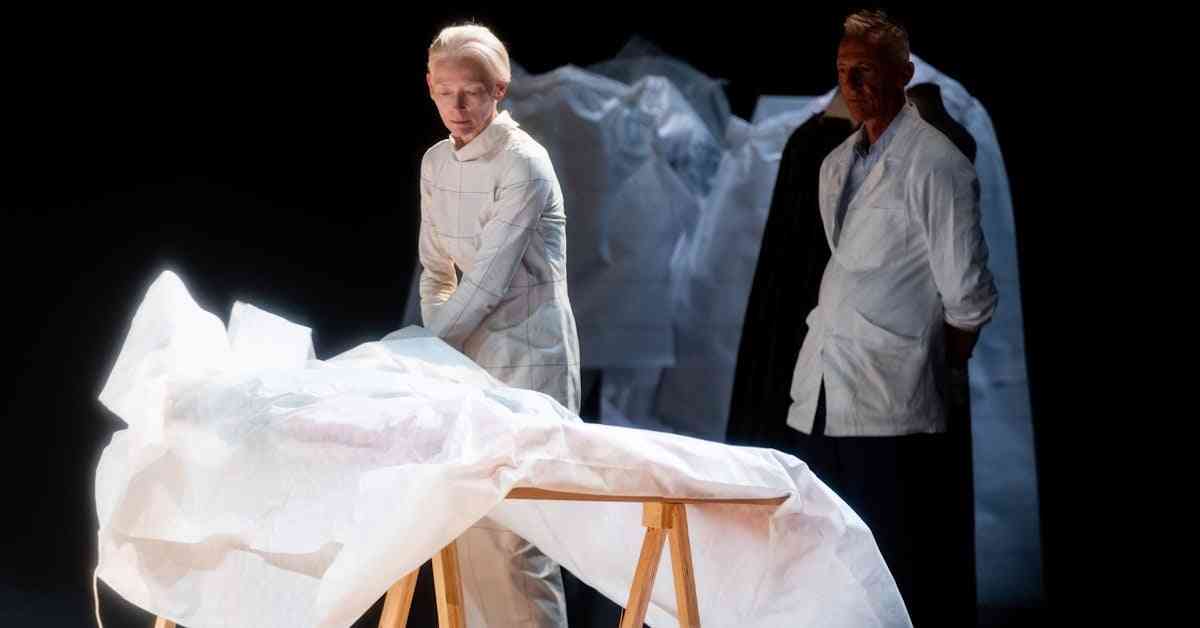Tilda Swinton’s upcoming performance in Taiwan has sparked excitement among fans of film and performing arts. Having had the opportunity to attend a rehearsal of “Dear Pasolini” this week, I am reminded of Tilda Swinton’s illustrious career and her deep connection to the world of cinema.
Reflecting on her four-decade career that began with Derek Jarman’s “Caravaggio” in 1985, Tilda Swinton has collaborated with renowned filmmakers such as Bong Joon-ho, Sally Potter, George Miller, David Fincher, Béla Tarr, the Coen Brothers, Wes Anderson, Joanna Hogg, Jim Jarmusch, Pedro Almodóvar, Luca Guadagnino, and Aphichatphong Wirasetthakun. Each of these collaborations has showcased Swinton’s versatility and commitment to artistic expression across various genres and styles.
Her performance in “Dear Pasolini” serves as a tribute to the Italian master, Pier Paolo Pasolini, known for his contributions as a director, writer, and poet. The production focuses on the significance of clothing as a form of expression, encompassing political, gender, and aesthetic themes. Swinton’s ability to embody a fluid and undefinable gender identity adds depth to the performance, inviting viewers to interpret Pasolini’s legacy in new and innovative ways.
The collaboration between Swinton and Olivier Saillard in “Dear Pasolini” transcends time and space, paying homage to Pasolini’s legacy through a contemporary lens. The dynamic between Swinton’s body and the costumes on stage creates a unique and engaging experience for the audience, allowing Pasolini’s spirit and vision to come to life.
Swinton’s approach to her role in the production is characterized by a sense of neutrality and fluidity, allowing the costumes to take center stage and convey the essence of Pasolini’s work. By immersing herself in the world of Pasolini through the costumes, Swinton brings a fresh perspective to the performance, creating a dialogue between past and present.
In a recent press conference, Swinton discussed her collaboration with Saillard and the significance of the costumes in the production. She highlighted the importance of breathing new life into the costumes and exploring the stories and emotions they evoke. Swinton’s experience as a performer in both film and theater has influenced her approach to the role, emphasizing the freedom and spontaneity of live performance.
As Swinton delves into the intricacies of the costumes in “Dear Pasolini,” she navigates the complexities of gender expression and identity, blurring the lines between past and present. By embracing the fluidity of gender and the transformative power of clothing, Swinton’s performance becomes a journey of self-discovery and artistic exploration.
Overall, “Dear Pasolini” is not just a theatrical production but a thought-provoking and immersive experience that challenges traditional notions of gender, identity, and art. Through her collaboration with Saillard and her poignant portrayal of Pasolini’s legacy, Swinton invites audiences to engage with the past in a new and meaningful way.












